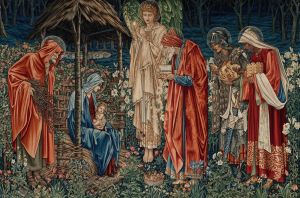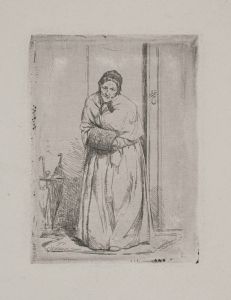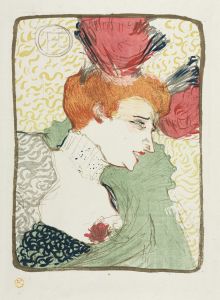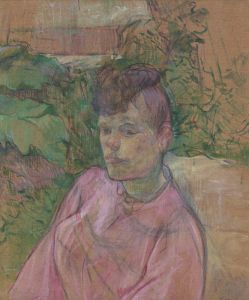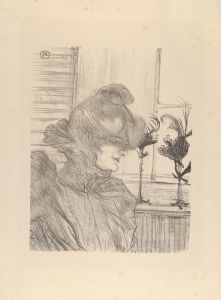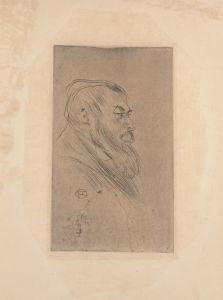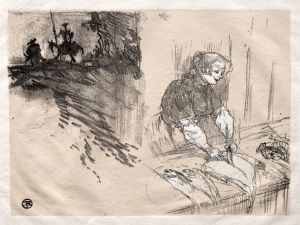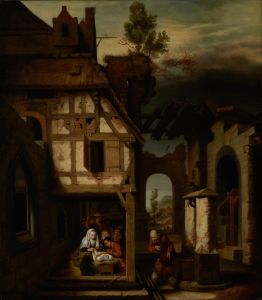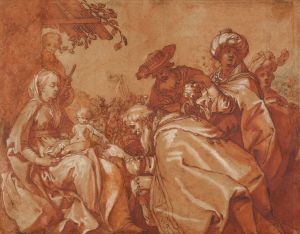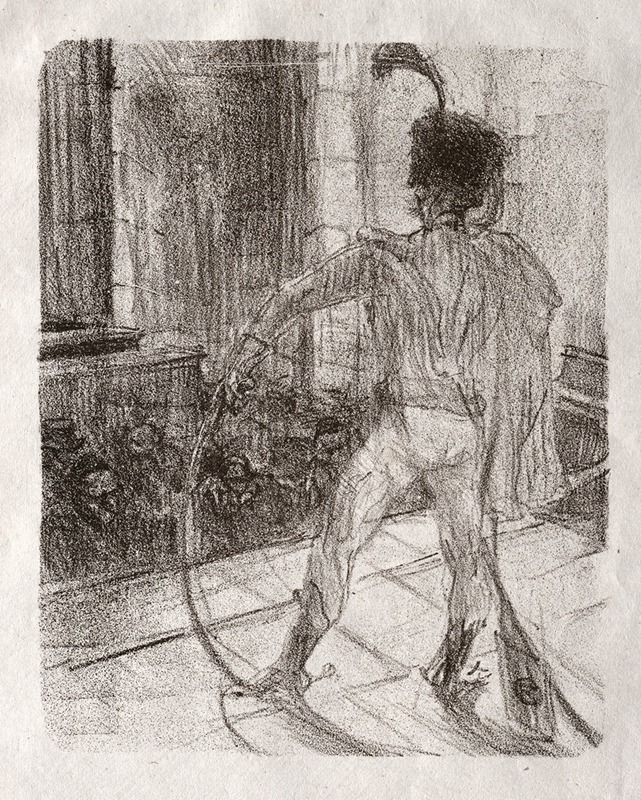
Au pied du Sinaï: Schlomé Fuss à la Synagogue
A hand-painted replica of Henri de Toulouse-Lautrec’s masterpiece Au pied du Sinaï: Schlomé Fuss à la Synagogue, meticulously crafted by professional artists to capture the true essence of the original. Each piece is created with museum-quality canvas and rare mineral pigments, carefully painted by experienced artists with delicate brushstrokes and rich, layered colors to perfectly recreate the texture of the original artwork. Unlike machine-printed reproductions, this hand-painted version brings the painting to life, infused with the artist’s emotions and skill in every stroke. Whether for personal collection or home decoration, it instantly elevates the artistic atmosphere of any space.
Henri de Toulouse-Lautrec, a prominent French painter, printmaker, and illustrator, is renowned for his depictions of Parisian nightlife in the late 19th century. His works often capture the vibrant and sometimes gritty atmosphere of the bohemian lifestyle in Montmartre, Paris. However, one of his lesser-known works, "Au pied du Sinaï: Schlomé Fuss à la Synagogue," diverges from his typical subject matter and offers a glimpse into a different aspect of his artistic exploration.
"Au pied du Sinaï: Schlomé Fuss à la Synagogue" is a painting that reflects Toulouse-Lautrec's interest in diverse cultural and religious themes. The title, which translates to "At the Foot of Sinai: Schlomé Fuss at the Synagogue," suggests a scene set within a Jewish synagogue, featuring a character named Schlomé Fuss. This work is part of Toulouse-Lautrec's broader exploration of various social settings and communities, beyond the cabarets and dance halls for which he is most famous.
The painting is characterized by Toulouse-Lautrec's distinctive style, which often includes bold lines, expressive figures, and a keen attention to detail. In this work, he captures the solemn and contemplative atmosphere of a synagogue, a place of worship and community gathering for Jewish people. The depiction of Schlomé Fuss, presumably a member of the congregation, adds a personal element to the scene, inviting viewers to consider the individual experiences within the collective religious setting.
Toulouse-Lautrec's interest in Jewish themes and characters may have been influenced by the diverse cultural milieu of Paris during his lifetime. The city was a melting pot of different ethnicities and religions, and Toulouse-Lautrec, known for his keen observational skills, was likely drawn to the rich tapestry of human experiences around him. His ability to portray a wide range of subjects with empathy and insight is a testament to his versatility as an artist.
While "Au pied du Sinaï: Schlomé Fuss à la Synagogue" is not as widely recognized as some of Toulouse-Lautrec's other works, it contributes to the understanding of his artistic range and interests. It showcases his ability to capture the essence of a moment, whether in the lively dance halls of Montmartre or the quiet reverence of a synagogue.
The painting also reflects the broader context of 19th-century art, where many artists were exploring themes of identity, community, and spirituality. Toulouse-Lautrec's work fits within this tradition, offering a unique perspective on the Jewish experience in France during this period. His portrayal of Schlomé Fuss at the synagogue is a reminder of the diverse narratives that make up the fabric of society, and the role of art in documenting and celebrating these stories.
In summary, "Au pied du Sinaï: Schlomé Fuss à la Synagogue" by Henri de Toulouse-Lautrec is a fascinating piece that highlights the artist's interest in cultural and religious diversity. Through his distinctive style and attention to detail, Toulouse-Lautrec captures a moment of quiet reflection within a Jewish synagogue, adding depth to his oeuvre and offering viewers a glimpse into a different aspect of 19th-century Parisian life.





